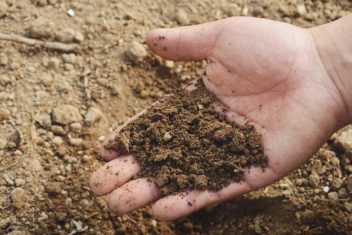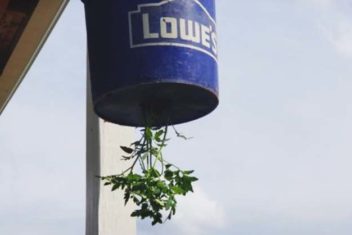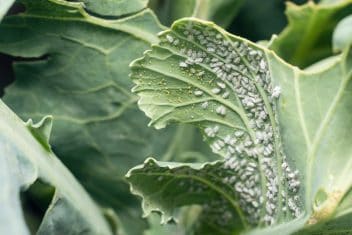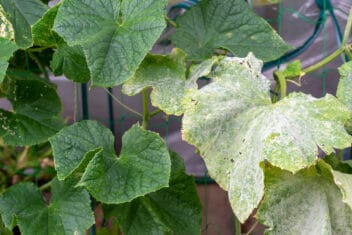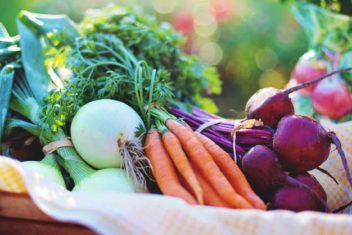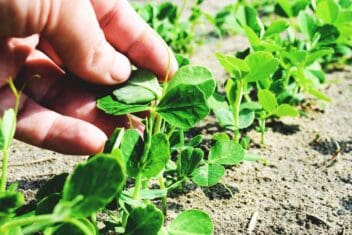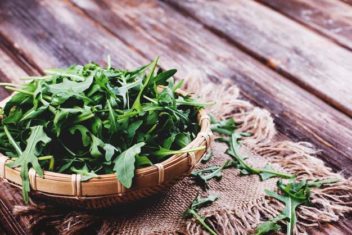Creating an edible garden doesn’t have to break the bank. Truth be told, it barely requires you to dip into the bank at all. You might be surprised to discover just how easy it is to create a budget-friendly food garden with next to no investment.
You can learn from some of the tricks and tips I’ve picked up over the years, and use them to feed yourselves, your families, and your community.
Ready to start saving?
Step One: Work with What You Already Have
An older mentor gave me this gem of advice decades ago, and it’s helped me tremendously over the years. Many people think that they need to shell out thousands for top-of-the-line supplies, or they won’t be able to grow their own food.
This couldn’t be further from the truth.
It’s likely that around your house right now, you have several items that can help you start your budget-friendly food garden.
Don’t get trapped in thoughts about aesthetics or anything like that right now. Grab a notepad and pen and take stock of what you have around you.
Take Advantage of Natural Resources
Do you live in a forested location? If so, you’re immensely fortunate. The woods are more abundant than most people realize.
Are there hilly areas nearby? Then look for pockets of dark, rich soil in lower areas, where runoff happens. It may have a fudge-like consistency and will be nutrient-dense and full of worms.
Unless there are “no trespassing” signs everywhere, you can likely harvest some of this to mix with your own garden soil at home. Add some local sand or gravel while you’re at it to help aeration.
Transplant whatever you can. Scoring free seeds (which we’ll touch upon shortly) is great, but so is transplanting wild foods that grow nearby.
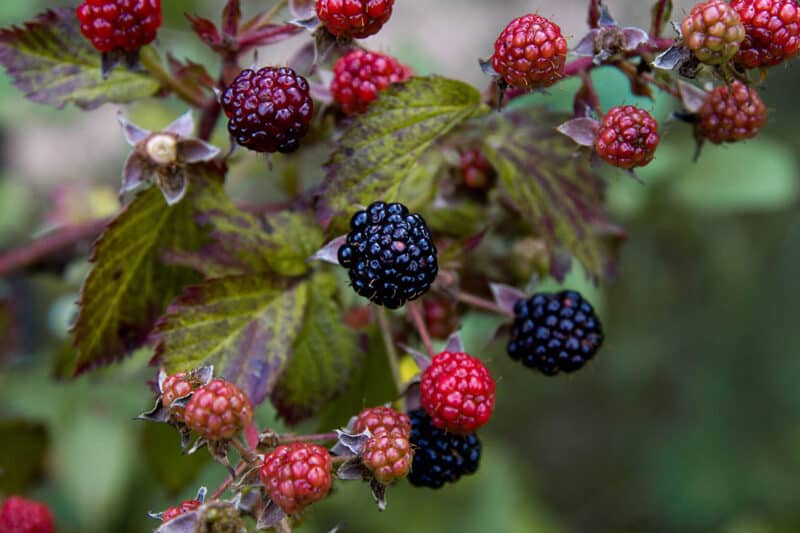
Raspberry and blackberry bushes transplant easily, and you can sometimes transplant mushrooms as well. If you have enough space on your property, consider transplanting species like hazelnut bushes or young elderberry trees.
In the autumn, gather seeds from plants you’d like to cultivate in your own garden. For instance, lambsquarters are perfect examples of nutritious, delicious wild greens that are ideal for a low-cost edible garden.
Possible Food-Growing Containers:
While you’re surveying the land outside for supplies, look around your home to see what you can grow food in. Generally, if it can hold water, it can hold growing media as well.
Empty Cans
Wash large can of soup, tomatoes, etc., once you’ve used their contents, and punch holes in their bottoms for drainage. Add well-draining potting soil (with mulch for water retention too). Then use them as planter pots for herbs, chili peppers, or small-scale vegetables such as purslane.
Tires
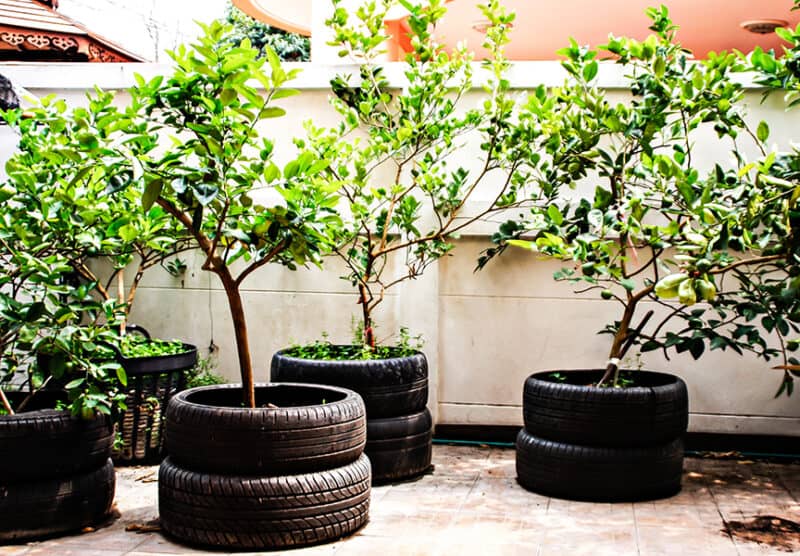
These won’t be the classiest growing containers around, but they’re effective. They’re especially good for growing potatoes. Start your plants inside single tires filled with compost-rich soil. Then add more tires—and more soil—on top as the plants grow.
If you don’t have several used tires in your garage or garden shed, ask your local garage if you can raid their discard pile. Check out our guide for more info.
Plastic Bins and Buckets
When my area switched to tall, wheeled recycling bins rather than short, squat blue and green ones, there were a lot of large plastic containers lying about.
So, I drilled holes into the bottoms and lower sides for drainage and used them to grow root vegetables.
You can do the same with garbage bins, buckets, etc. Sure, plastic isn’t ideal for a lot of people who are trying to avoid synthetics, but we’re trying to work with what we can here.
Part of creating a budget food garden is making compromises.
Old Bookcases and Dresser Drawers
I managed to score a couple of old, narrow IKEA bookcases that someone had left at the curb on garbage day.
One I transformed into a cold frame, and the other is a grow bed for six different kale varieties. I just drilled holes into their backs before placing them in the garden so they could drain properly.
Drawers from old dressers work really well for this purpose, as well. Once again, make sure you drill drainage holes, and plan what you plant in them carefully. Since they aren’t particularly deep, choose shallow-rooted plants like lettuces and herbs.
Old Eavestroughs/Gutters
Speaking of shallow-rooted plants, old eavestroughs are perfect for growing greens, herbs, and edible flowers. Save gutters from your own roof if you replace them, or keep an eye out when others discard them during building projects.
Chain these together and hang them on the side of your house. Choose the sunniest side for sun-loving plants and the shaded side for lettuces and other hardy greens.
This isn’t just a cheap and easy way to grow food: it’s also a great form of space-saving vertical gardening.
Soda Bottle Planters
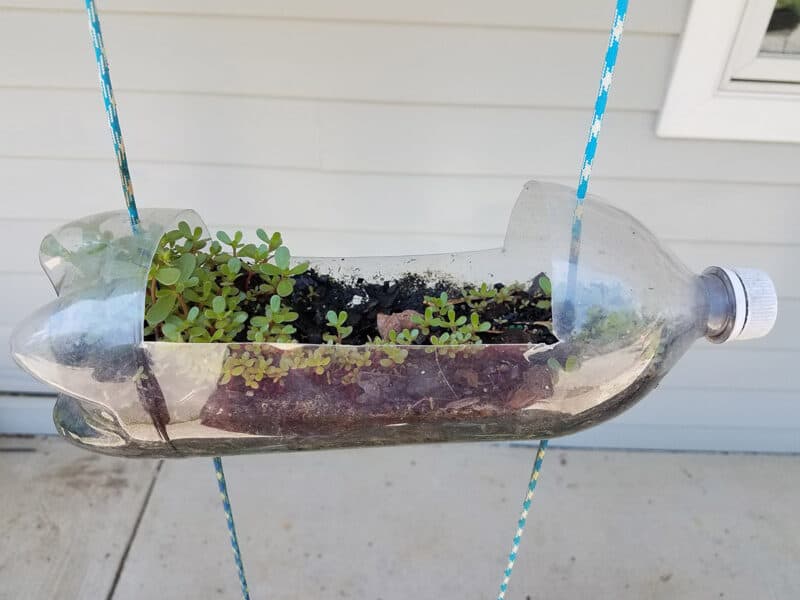
Speaking of vertical gardening, you can use old soda bottles to grow food plants upside-down. The best plants for this method are nightshades, and species that grow on vines.
Try growing tomatoes, peppers, eggplants, cucumbers, melons, squashes, and pumpkins with this method.
DIY Raised Beds
You’d be amazed at what you can use to create raised garden beds. My partner assembled some of hers from fallen hardwood trees, and I’ve built several from local stones. We’ve also repurposed cinder blocks, wood, and other materials from old ruins we’ve found in the woods.
Step Two: Score Free Seeds and Plants Whenever and However Possible
We have other great articles on how to score free seeds and free plants, so I’ll send you to check those out rather than being repetitive. The only thing I’ll reiterate that those are ideal ways to start (or continue building) a budget-friendly food garden. After all, nothing says “frugal” like being free.
In addition to the methods listed above, remember that you can also grow food from seeds you already have at home. You might even have seeds for many different edible plants in your fridge or pantry right now!
Do you use spices like fennel or dill? Guess what they’ll grow if you plant them?
What about produce that may be going “off” in the fridge? If you have a standard field cucumber in there, plant or save the seeds and grow your own.
I’ve managed to grow full gardens with detritus leftover at farmer’s markets. Have a chat with some of the local produce growers. Let them know that you’re starting a food garden, and ask if they’d be interested in letting you keep bits that have been damaged or trodden on during the day.
Items like tomatoes often drop from stalls and display tables. Even if they split open, you can probably save at least 100 seeds from an average ripe tomato. If all those seeds grow into mature plants, and each of those plants can yield about 20lbs during the growing season… well, you do the maths.
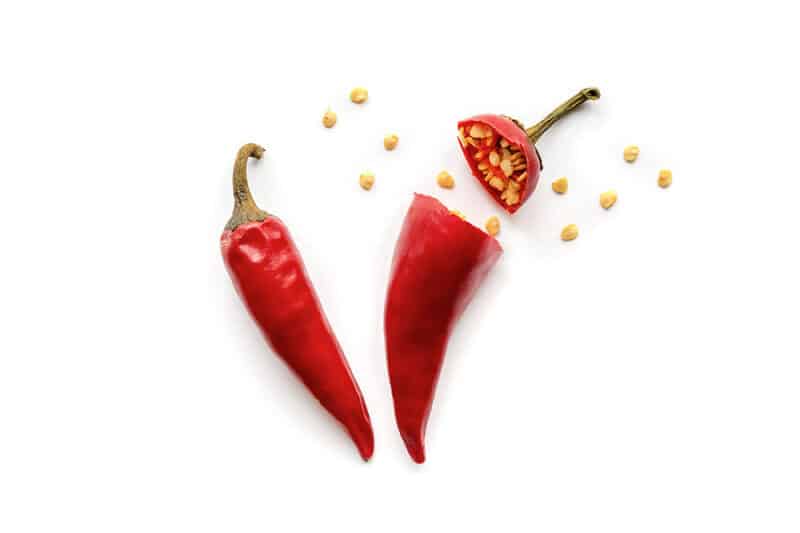
The same goes for other vegetables that are filled with seeds. There are the aforementioned cucumbers, of course, but also sweet and spicy peppers, melons, squashes, and pumpkins.
Don’t forget about various cuttings and scraps. Plant green onion bulbs after you’ve harvested all their green bits, and they’ll grow full-sized again.
Did the market gardeners offer you herb cuttings? Set those in water (and change that water regularly) until they start to root. Then pop them into the soil.
Any hairy, leggy potatoes left at the bottom of the bin? Grab those and plant them too.
Step Three: Take Advantage of Community Resources
Did you know that many communities have tool-lending libraries? Seed banks have become incredibly popular recently as more people have started growing their own food. As their popularity has risen, so has the need for various garden tools.
Since these can be so costly, lending libraries sign out everything from trowels and watering cans to rakes and rototillers.
If you haven’t seen any adverts for these in local papers, try talking with other gardeners in your area. They might be able to direct you to places where you can borrow these items for free.
Additionally, consider reaching out to local edible landscaping consultants. They will occasionally offer pro bono planning for community garden projects.
Local churches and other places of worship often have bulletin boards and other resources that may help you with your own garden planning resources.
You may also find others with similar goals, which means that you might be able to pool resources.
As you can see, there are several different options available for your budget-friendly food garden. Borrow or trade whatever you can, and use what’s available to you for free. You can grow a ton of food for next to nothing with a bit of creative planning and building.


